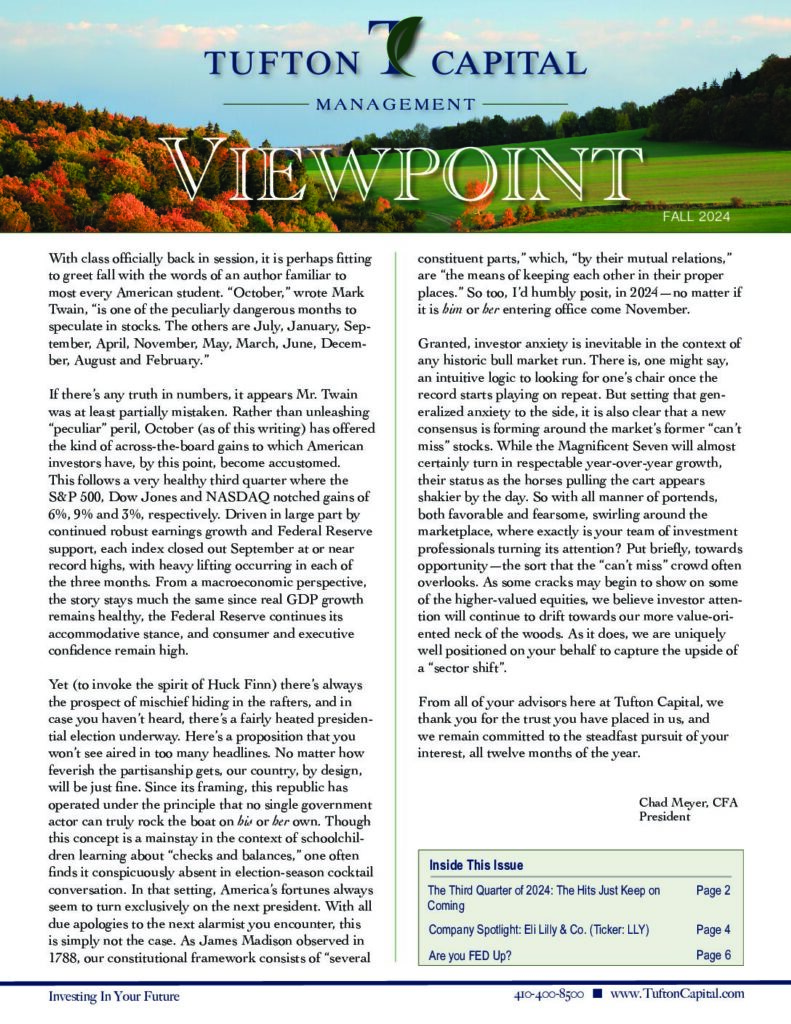 The sentencing of Bernard Madoff brings the Securities and Exchange Commission one step closer to closing the book on one of the largest Ponzi schemes ever perpetrated. While Madoff has garnered most of the headlines, numerous other fraudulent schemes of various magnitudes have come to light over the past six months.
The sentencing of Bernard Madoff brings the Securities and Exchange Commission one step closer to closing the book on one of the largest Ponzi schemes ever perpetrated. While Madoff has garnered most of the headlines, numerous other fraudulent schemes of various magnitudes have come to light over the past six months.
The common thread between many of these schemes is quite simple. The criminal serves dual roles as investment manger and qualified custodian of the same assets. As investment manager, funds are accumulated, often under the guise of guaranteed high investment returns. Once in possession of the money, funds are transferred between accounts in order to meet withdrawal requirements. As custodian, fake account statements with bogus information are provided in order to create the illusion of a legitimate operation. If the money inflow from new clients offsets the outflow from withdrawals, the fraud may be perpetrated for a long time.
Hardesty Capital does not take custody of client assets. Independent third-party qualified custodians, such as banks and broker-dealers, are utilized for the vital function. Qualified custodians are subject to extensive regulation and oversight. Included in the oversight is a daily reconciliation conducted by our firm to assure the accuracy of custodial records.
In response to the financial schemes, the SEC has modified their registered investment adviser examination process. They will now perform a valid verification of assets by requesting independent confirmation of investor assets from various third parties, including custodians and advised clients. The SEC exam staff may ask clients to confirm that their account balances as of a specific date were consistent with their own records and that the contribution and withdrawals from their account were authorized.
—Eric Schopf
 Is this rally for real? On March 6, the S&P 500 hit a low of 666.8. Since then, the index is up to 797.9, a very impressive recovery in a short period of time. In the closing three weeks of the quarter, we have seen a 16.8% gain in the index. Investors are cautious, however— we have seen promising 10% gains wiped out three times since September. This gut-wrenching market appears to be pricing in a tremendous amount of bad news. Hope that the Obama administration would usher in a more optimistic mood was quickly dashed as the S&P 500 in January and February returned -8.3% and -10.8%, respectively. For the quarter, the S&P was down 10.9%.
Is this rally for real? On March 6, the S&P 500 hit a low of 666.8. Since then, the index is up to 797.9, a very impressive recovery in a short period of time. In the closing three weeks of the quarter, we have seen a 16.8% gain in the index. Investors are cautious, however— we have seen promising 10% gains wiped out three times since September. This gut-wrenching market appears to be pricing in a tremendous amount of bad news. Hope that the Obama administration would usher in a more optimistic mood was quickly dashed as the S&P 500 in January and February returned -8.3% and -10.8%, respectively. For the quarter, the S&P was down 10.9%.
To be sure, the recent economic numbers remain gloomy. The Gross Domestic Product fell at an annual rate of 6.3% in the fourth quarter of 2008. A similar decline is likely in the first quarter of 2009. This is the worst back-to-back quarterly performance since the fourth quarter of 1981 and first quarter of 1982. Unemployment spiked to 8.1% and will likely go higher, possibly exceeding 10% in the second half of 2009. The manufacturing and service sectors both continue to contract. All in all, the economy is performing very poorly.
There are, however, early signs of economic stability. The housing market is showing glimmers of hope as new home starts are up and housing affordability is at record highs. Inflation, the enemy of financial assets, is well under control as commodity prices have fallen dramatically from their speculative excesses. Historically low interest rates, combined with government-led programs, have allowed the credit markets to return to some semblance of normalcy. Finally, the strengthening dollar is a very good indication that the economy is beginning to turn. (more…)
 The headline on Jay Hancock’s December 10, 2007 blog for The Baltimore Sun reported: “Harvard Uses $35 Billion Endowment to Cut Tuition.” By way of Bloomberg, Hancock went on to say that,
The headline on Jay Hancock’s December 10, 2007 blog for The Baltimore Sun reported: “Harvard Uses $35 Billion Endowment to Cut Tuition.” By way of Bloomberg, Hancock went on to say that,
“These families [making 120k to 180k] will pay just 10 percent of their yearly earnings to send a child to Harvard, the Cambridge, Massachusetts university said today. The payments decline on a sliding scale, with those making less than $60,000 attending for free. The school also eliminated student loans, saying students will get additional grants as needed.”
The Boston Globe reports that Harvard intends to continue its 2007 financial aid initiative, despite suffering a decline in its endowment (see March 16th issue of Forbes). Without such resources, however, judging from anecdotal conversations we’ve had with other educators and various school trustees, there is palpable fear when it comes to affordability issues in this brave, new economy. And worry they should, for educational costs have skyrocketed over the past quarter century, far in excess of normal inflation. (more…)
One of the last acts of the recent Congress, the “Worker, Retiree, and Employer Recovery Act of 2008” that was signed into law by President Bush on December 23, 2008, included a temporary one-year waiver of required minimum distributions (RMD) from IRAs and most defined contributions plans offered by an employer. These include traditional individual retirement accounts (IRAs), simplified employee pension (SEP) IRAs, savings incentive match plan for employees (SIMPLE) IRAs, inherited IRAs (including inherited Roth IRAs), defined contribution plans (401(k) plans, profit sharing plans, and money purchase pension plans), as well as 403(b) custodial accounts. In general, there is no distribution requirement for non-inherited Roth IRAs. The special waiver is in effect only for distributions that would have been required for 2009.
At the outset, the reader might be cautioned that there’s rarely anything drier than a missive throwing around retirement acronyms, age thresholds, calendar dates and tax consequences… it can become quickly confusing, to the point of inducing narcolepsy. “Forewarned is forearmed,” as the saying goes… we’ll give it our best shot in explaining the current landscape. If you’re still “in the dark” thereafter, the fault rests with us, not you—by all means, give us a call and we’ll attempt to clarify. (more…)
 It was another difficult quarter for the stock market as measured by the S&P 500. Equity prices declined 21.8%, resulting in the worst quarterly performance since the market crash during the fourth quarter of 1987. For the year, the market declined 37.0%, the second worst year in the history of the stock market and the steepest one-year decline since 1931. Not surprisingly, the economic conditions deteriorated as housing prices continued to fall and foreclosure rates in many markets rose sharply.
It was another difficult quarter for the stock market as measured by the S&P 500. Equity prices declined 21.8%, resulting in the worst quarterly performance since the market crash during the fourth quarter of 1987. For the year, the market declined 37.0%, the second worst year in the history of the stock market and the steepest one-year decline since 1931. Not surprisingly, the economic conditions deteriorated as housing prices continued to fall and foreclosure rates in many markets rose sharply.
Employment levels also declined and the unemployment rate increased to 6.7% in the third quarter, up sharply from 5.0% at the outset of the year. This was still much better than the 8.9% unemployment level seen in the second quarter of 1975, the last serious recession since 1931. By comparison, unemployment levels of the depression years, 1933 – 1937, ranged from 14-25%. (more…)
 New Year’s Day… taking our cue from David Letterman, “It’s so cold today that Bernie Madoff is actually looking forward to burning in hell.” The still-unfolding Madoff scandal reminds me of having to sit through the inane movie, Weekend at Bernie’s, with some of my children almost 20 years ago.
New Year’s Day… taking our cue from David Letterman, “It’s so cold today that Bernie Madoff is actually looking forward to burning in hell.” The still-unfolding Madoff scandal reminds me of having to sit through the inane movie, Weekend at Bernie’s, with some of my children almost 20 years ago.
For those of you unfamiliar with the film, a few words of advice: keep it that way. The ironies, though, abound. A quick check of The Internet Movie Database (www.imdb.com) reveals this: “A lively comedy about a guy who isn’t.” Drilling down a little further, Wikipedia’s plot description notes that, “Larry and Richard uncover a fraud involving multiple life insurance payments.” In the interest of full disclosure, Mr. Madoff’s sons—the ones who turned him in—are named Andrew and Mark… if it’s true that a ripped-off party in daddy’s $50 billion scam included a Russian oligarch, they may find life imitating art. (more…)
 In the third quarter of 2008, the markets experienced the most serious challenge to world financial stability since the depression of the 1930s. What began in early 2007 with a sharp upturn in subprime mortgage delinquencies spread into commercial banks, insurance companies, and investment banking firms. By quarter’s end, the world’s credit markets were in a state of seizure. Investors and borrowers began to lose confidence in our leading financial institutions and volatility reached extremely high levels. In particular, equity prices fell sharply, reacting to seemingly unbelievable developments in the individual financial institutions.
In the third quarter of 2008, the markets experienced the most serious challenge to world financial stability since the depression of the 1930s. What began in early 2007 with a sharp upturn in subprime mortgage delinquencies spread into commercial banks, insurance companies, and investment banking firms. By quarter’s end, the world’s credit markets were in a state of seizure. Investors and borrowers began to lose confidence in our leading financial institutions and volatility reached extremely high levels. In particular, equity prices fell sharply, reacting to seemingly unbelievable developments in the individual financial institutions.
As the quarter came to a close, some of our nation’s largest institutions had either ceased to exist or were in the process of radically changing their business models. Goldman Sachs and Morgan Stanley experienced 40% declines in stock values, in just three days, victims of short-sellers and hedge funds. By the week ended September 19th, Morgan and Goldman announced plans to reorganize as bank holding companies. In a single six-month period, all five of America’s major investment banking firms (Bear Stearns, Merrill Lynch, Lehman Brothers, Goldman Sachs, and Morgan Stanley) either merged with a bank, reorganized, or filed for bankruptcy. The end of America’s leadership in investment banking would have been unthinkable at the start of the third quarter of 2008.
Commercial banks were also swept into the maelstrom. Wachovia Bank’s stock fell from 60 in early 2007, to as low as 10 on September 26, 2008. As deposits fled, Wachovia was forced into a merger with Citigroup, which was announced on September 29th. This followed the merger of Washington Mutual, our nation’s largest thrift, into J. P. Morgan, which had occurred earlier in the same week. As the leading originator of many of the subprime mortgages, Washington Mutual was taken over by the Office of Thrift Supervision and forced to accept merger terms very favorable to J. P. Morgan. Even the old-line banks such as Fifth Third Bank of Cincinnati, National City and KeyCorp (both Cleveland-based banks), and Regions Financial of Birmingham experienced share price declines of 70% or more, frightening investors and depositors. (more…)
 Fear and greed drive markets. In Jim’s letter, he explains how we got to where we are so quickly. But to summarize in a word, it was greed. Greed was everywhere, not just on Wall Street, as the media would like you to think. Greed pushed the price of oil to nearly $150 per barrel. Greed convinced speculators to buy homes they intended on flipping. Greed motivated some home-buyers to “fudge” their mortgage applications. Greed convinced mortgage brokers that credit worthiness really did not matter. Greed inspired banks and brokers to securitize these mortgages. And greed produced the over-leveraged balance sheets loaded with these securities.
Fear and greed drive markets. In Jim’s letter, he explains how we got to where we are so quickly. But to summarize in a word, it was greed. Greed was everywhere, not just on Wall Street, as the media would like you to think. Greed pushed the price of oil to nearly $150 per barrel. Greed convinced speculators to buy homes they intended on flipping. Greed motivated some home-buyers to “fudge” their mortgage applications. Greed convinced mortgage brokers that credit worthiness really did not matter. Greed inspired banks and brokers to securitize these mortgages. And greed produced the over-leveraged balance sheets loaded with these securities.
Now, fear has taken over. Fear forced Bear Stearns into the arms of JP Morgan. Fear brought on the nationalization of Fannie Mae and Freddie Mac. Fear drove AIG, the world’s largest insurer, to the brink of bankruptcy. Fear seized up the credit markets. Fear forced Goldman Sachs and Morgan Stanley to give up their investment banking business models. Fear pummeled stock prices with record force as the volatility index spiked to record levels. Fear is everywhere.
From peak to trough, the stock market has dropped by more than 30% through the first week of October. For investors with a time horizon of anything longer than a year, getting out of the market at this point makes no sense. Most of the pain has been inflicted. Stocks could go lower but clearly a tremendous amount of bad news is already priced into the market. After all of this, a “professional investor” goes on national television and advises people to get out of the market? That should prove to be one of the all-time bad calls ever made. The bigger problem with getting investors out at the bottom is they most likely will not get back in when the market improves. (more…)
 It was another disappointing quarter for the financial markets as investors remained cautious in the face of high energy prices and continued weakness in the housing market. Uncertainty regarding the Federal Reserve’s course of action in dealing with the economic weakness and credit market issues has also constrained investors. For the quarter, the Dow Jones Industrial Average was off 6.9% following a decline of 6.8% in the first quarter, bringing the year-to-date decline to 13.3%. The month of June was the worst June since 1930, as the Dow was off 10.0%. The S&P 500 was down 11.9% in the first-half. Other indices reported similar first-half results, with the NASDAQ down 13.5% and the Russell 2000, an index of small capitalization companies, off 10.0%. Stock prices tumbled in the quarter due to an especially poor performance by the financial sector. Although J.P. Morgan Chase successfully completed its merger with the failing Bear Stearns, continued problems remain in the sector. The rescue of Bear Stearns was necessary because its business model was not adequately diversified, as it was dependent primarily on sub-prime mortgages and newer “experimental” derivative products, such as credit default instruments.
It was another disappointing quarter for the financial markets as investors remained cautious in the face of high energy prices and continued weakness in the housing market. Uncertainty regarding the Federal Reserve’s course of action in dealing with the economic weakness and credit market issues has also constrained investors. For the quarter, the Dow Jones Industrial Average was off 6.9% following a decline of 6.8% in the first quarter, bringing the year-to-date decline to 13.3%. The month of June was the worst June since 1930, as the Dow was off 10.0%. The S&P 500 was down 11.9% in the first-half. Other indices reported similar first-half results, with the NASDAQ down 13.5% and the Russell 2000, an index of small capitalization companies, off 10.0%. Stock prices tumbled in the quarter due to an especially poor performance by the financial sector. Although J.P. Morgan Chase successfully completed its merger with the failing Bear Stearns, continued problems remain in the sector. The rescue of Bear Stearns was necessary because its business model was not adequately diversified, as it was dependent primarily on sub-prime mortgages and newer “experimental” derivative products, such as credit default instruments.
It was not much better in the bond market as yields across the U.S. Treasury curve moved higher by about a half percent, driving bond prices down during the quarter. For the year, though, yields are essentially unchanged. The yield on the 10-year Treasury, for example, was 3.94% at the end of the period versus 4.15 % on December 31st. (more…)
 First, it was the technology bubble of the late 1990’s. Shortly thereafter, we experienced the real estate bubble. Now, we may be witnessing the third bubble—commodities, specifically energy.
First, it was the technology bubble of the late 1990’s. Shortly thereafter, we experienced the real estate bubble. Now, we may be witnessing the third bubble—commodities, specifically energy.
The chart below shows us how painful the unwinding of a speculative bubble can be. The Nasdaq index exceeded 5,000 eight years ago but still remains more than 50% below the peak level. Housing is a similar story as the seasonably adjusted number of new homes starts has declined by 50% from 2004 and 2005 levels. Oil is showing signs of similar speculation as massive amounts of money are flooding into the sector. The price of oil is up 40% just this quarter. (more…)
 About the best that can be said for the first quarter of 2008 is that it is over. The economy weakened in the quarter as continued worsening conditions in the housing market spread to the broader consumer sector. By quarter’s end, there were new signs of troubles in the capital spending sector of the economy. All of the developments were further burdened by extremely high oil prices, which briefly exceeded $110 a barrel in the quarter. The stubborn and surprising unity of the OPEC oil cartel is now having a negative impact on the developed, developing and, especially, the third world countries.
About the best that can be said for the first quarter of 2008 is that it is over. The economy weakened in the quarter as continued worsening conditions in the housing market spread to the broader consumer sector. By quarter’s end, there were new signs of troubles in the capital spending sector of the economy. All of the developments were further burdened by extremely high oil prices, which briefly exceeded $110 a barrel in the quarter. The stubborn and surprising unity of the OPEC oil cartel is now having a negative impact on the developed, developing and, especially, the third world countries.
Economic jitters spread through the financial markets in the first quarter, fueled by concerns that some of the newer synthetic financial securities, engineered by Wall Street, were coming unhinged. The loss of confidence reflected in the absence of liquidity in many of these exotic securities caused dislocations in the markets. Although most of the securities were held by large financial institutions all over the world, many were held by “sophisticated” hedge funds and other investment novelty organizations. Indeed, some notable hedge funds failed because of it, including one run by the once well-regarded Carlyle Group. (more…)
 A random thought, or two, as April 15th approaches…
A random thought, or two, as April 15th approaches…
Thanks to Larry Kudlow for pointing out that those IRS tax rebate notices everyone recently received cost us taxpayers a “cool $42 million.” And speaking of government waste at the local level, kudos to Comptroller Peter Franchot for initially sending out Maryland’s quarterly vouchers, for this year, with “2007” printed on them… wonder how much that cost us in re-printing and re-mailing costs?
As for these rebate checks, talk about an idea whose time has definitely not come… oh, and by the way, those who comprise the top 5% of taxpayers and pay 60% of all personal income taxes, will find their rebates either reduced or completely phased-out. This brings to mind Thomas Jefferson’s observation—“A government big enough to give you everything you want, is big enough to take everything you have.” (more…)



